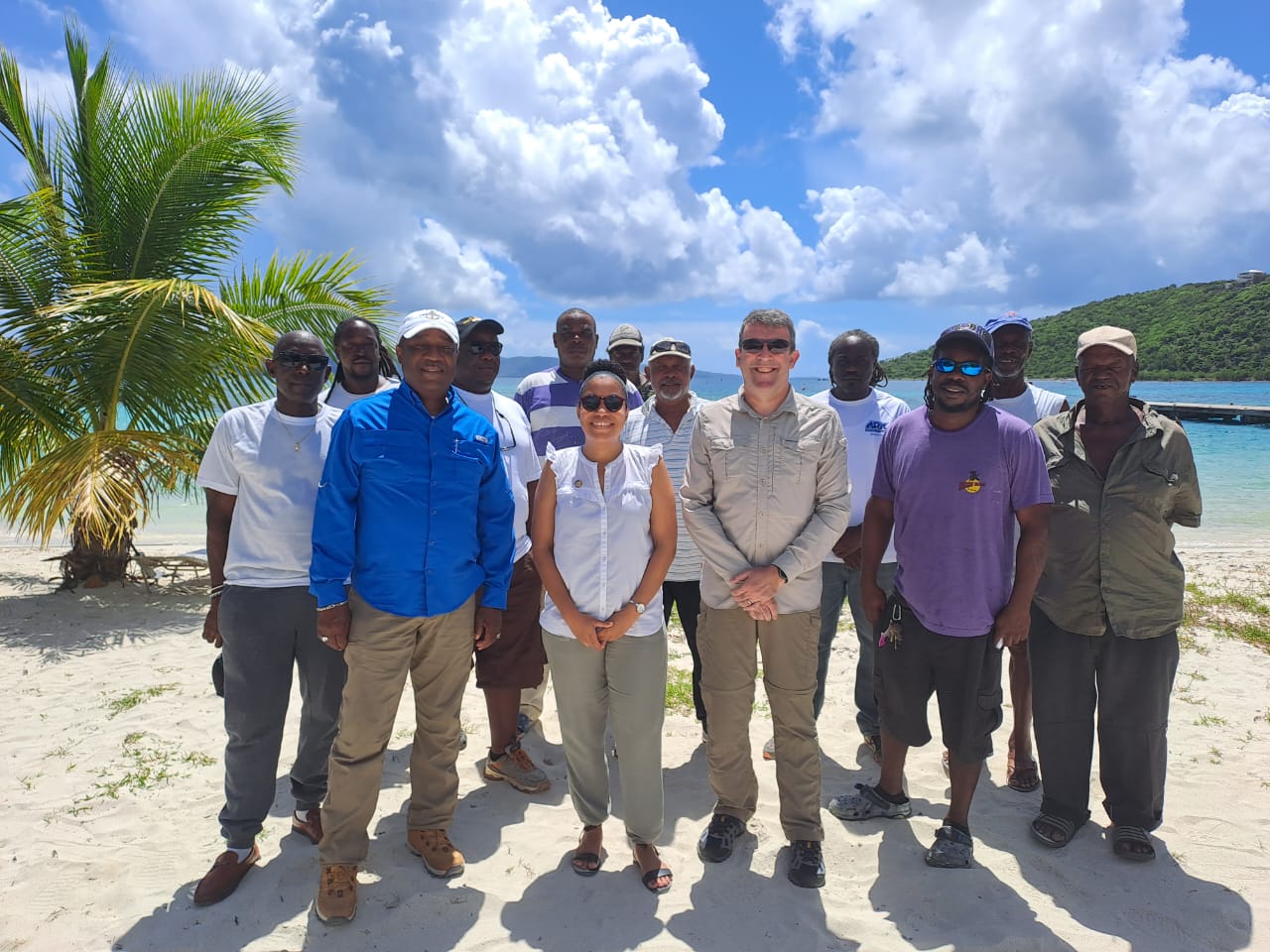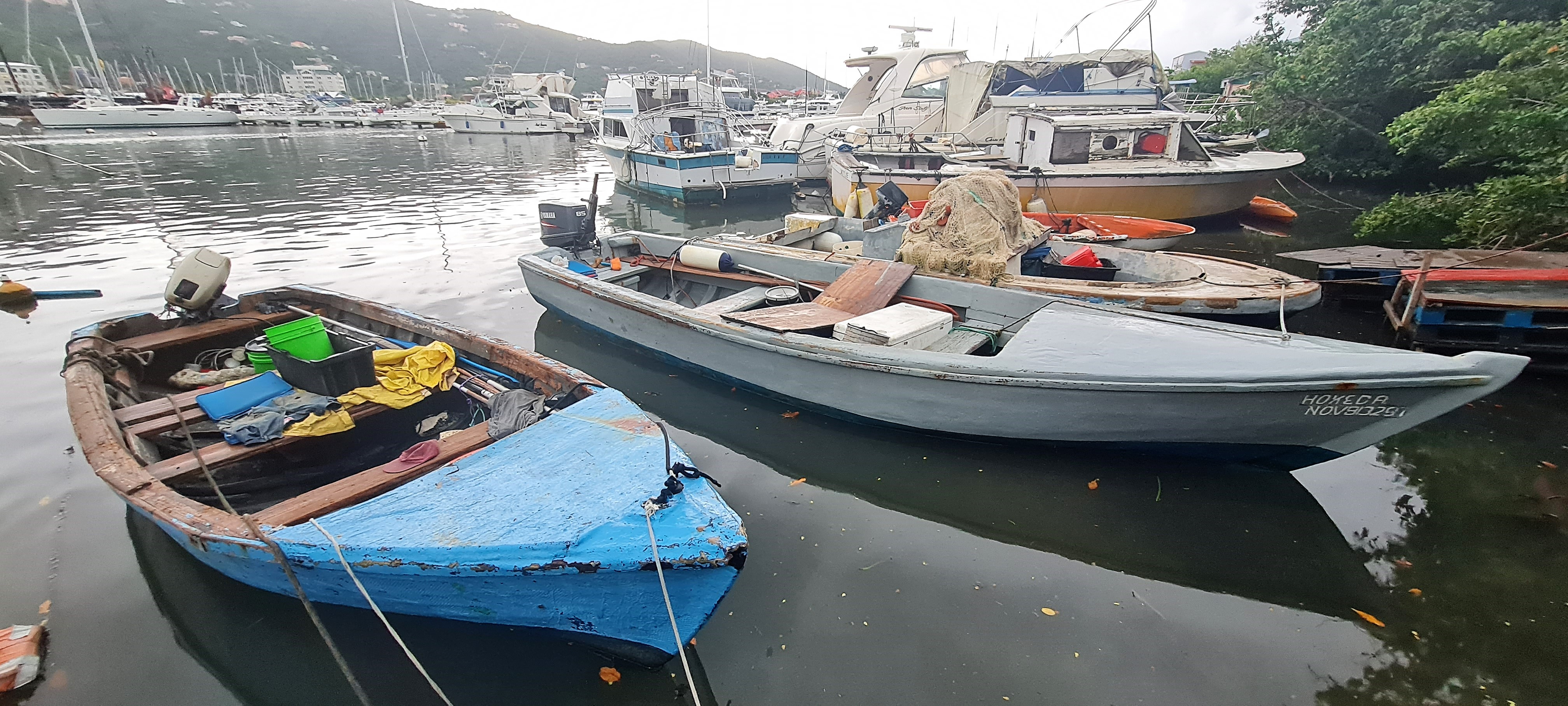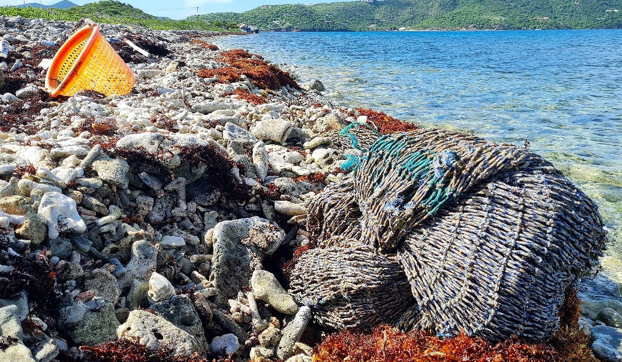Cefas’ Dr Peter Randall recently visited the (British) Virgin Islands (hereafter referred to as the Virgin Islands (VI)) as part of the Darwin Plus Funded Project, “Capacity Building in Fisheries Evidence, Networks and Management in the Virgin Islands”.
The project began in 2020 and aims to strengthen fisherfolk capacity and engagement in sustainable fisheries management including supporting the development of a formalised network of fisherfolk to enable a collective voice and greater participation in decision-making. The project also reviews and merges existing evidence, data and maps for the marine areas and creates a centralised fisheries database and a fisheries evidence report to improve the capture and display of fisheries data to support future licensing and management decisions.
The visit was a collaborative venture with Peter joining representatives from the Caribbean Natural Resources Institute (CANARI), and the Caribbean Network of Fisherfolk Organisations (CNFO), with the Virgin Islands Department of Agriculture and Fisheries (DOAF) facilitating meetings with fisherfolk on the four main islands: Tortola, Virgin Gorda, Jost Van Dyke and Anegada.
Covid-19 meant that information for the fisheries evidence report had to previously be collected remotely. The visit allowed Peter to ground truth that information, visiting landing sites, catch sale sites and seeing the types of fishing vessels and fishing gears used in the VI.

Peter, Cefas' lead scientist for the fisheries evidence report, described his visit by saying:
“The visit to the VI was very successful. Of the approximately 50 fishers that attended the 4 collaborative meetings, 24 were willing to provide information on their fishing practises and on their encounters with Abandoned, Lost and otherwise Discarded Fishing Gear (ALDFG) around the Virgin Islands. The fishers provided valuable insight to our remote findings, helping us to understand the local context. The responses from the fisherfolk will be fed into the fisheries evidence report which identifies key issues and gaps for fisheries management.”

Marine litter tends to accumulate on the eastern shores of the Virgin Islands. All of the Virgin Islands are volcanic in origin with the exception of Anegada which is a low-lying coral island. Peter had the opportunity to visit a couple of the shorelines where litter is known to wash ashore. He stated:
“Litter was present on the sandy eastern beaches of Anegada but as it passes through the coral reef, to arrive on the shore, it is inevitably broken up and damaged on the way through. ALDFG was present on this shore but tended to be mainly smaller pieces. The litter arriving on the eastern shore of Beef Island has no such barrier to traverse, so large items wash up, at times relatively unscathed. I was surprised at the extent of litter present on this beach which included single use plastic bottles, ropes, large fibreglass structures from vessels, fish baskets, and what appeared to be an entire trawl net buried in the shoreline. There is no trawl fishery within the VI and they do not use fish baskets, suggesting that these items came from elsewhere”.

Overall, the trip was a great success, with the information and findings being invaluable to the outcomes of the Darwin funded project. Essential relationships were also built with project partners, which has not been possible over the past two years, again feeding into the overall objectives.
Other project activities continue, including follow-up meetings with fishers to support the development of a local fisherfolk network and capacity building in sustainable ecosystem-based fisheries management for fisherfolk.
The project report, including recommendations, will hopefully be available early in 2023 to support the development of the fisherfolk network to contribute to coordinated efforts and ultimately to protect fisheries and the natural environment.
A press release from the VI government on the collaborative visit can be found here.